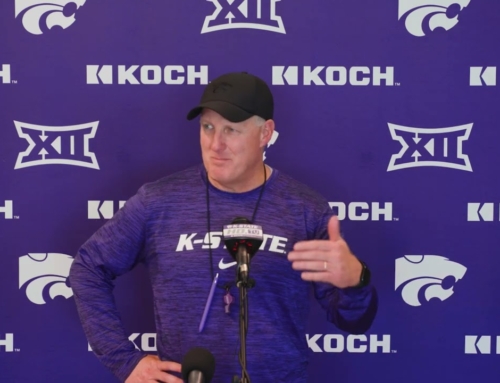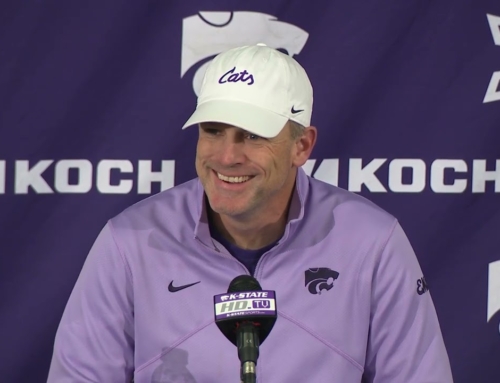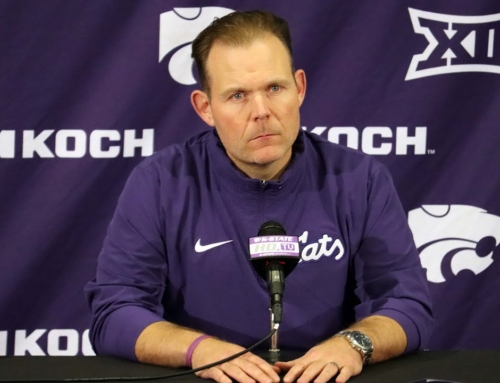Following Wednesday’s general board meeting, Superintendent Dr. Marvin Wade announced the district’s intent to return to five days a week on site in the new year.
Wade indicated that based on the metrics, when Kansas State students were coming back, discussions were initially brought up to shut down and be all remote. However when his administration looked at the group of who in the community was affected, and when they were affected, USD 383 knew that that was essentially a short term anomaly they worked through it.
“[The] same idea that the incidence rate within the community is important to the community as much as it is important to us in the schools. But as everybody says, staff is a big focus,” Wade said. “Now we look at the positivity rate, we look at the incident rate, but we also look at attendance rate of students and staff numbers, testing positive numbers and quarantines and pay attention to those numbers…. Probably the biggest metric we look at is the attendance of our staff. And there’s not a magic number we have.”
Wade mentioned that previously on October 21st, there was the commitment based on where the district was to stay in hybrid for the rest of the semester up until winter break, if possible. Key to this conversation was the idea brought forward of bringing students back for four days a week, which ultimately was avoided due to conversations in medical community and administration penchant upon assurances that unless conditions improve dramatically it was not worth the risk.
“If you’re going to bring them back, what we need to do in order to give you our support is to be able to say you can quickly pivot; that you can get your numbers down, your classroom numbers down, that you’ve got the PPE, you’ve done those mitigation efforts, and that you can pivot out of it if you need to,” Wade said. “I for one was not comfortable at that point in time. I said, ‘I don’t support it, we cannot pivot quickly enough. We haven’t done everything we can to mitigate, I can’t say that we’ve got class size numbers down enough to be able to come to you and say I wholeheartedly endorse this’. So we stayed in hybrid.”
Reflecting upon their pride that they’ve been in hybrid all the first semester, Wade understands that if USD 383 can not maintain their 5-day in-person posture he doesn’t consider that a failure.
“The safest way is to not move forward and to stay the way we are. So we won’t take that risk,” Wade said. “I’d rather take the risk, look at these attendance rates, look at these numbers in quarantine. And watch that and then be able to pivot away if we need to if things go south.”
The biggest challenge in making the January 5th date a reality was changing schedules, an obstacle very difficult while maintaining numbers down that takes time.
“This break between winter break and coming back in January, provided us that essentially natural opportunity to do that. So schedules have been changed. Staff have been added, people have been moved around,” Wade said. “Going back to that November 5 letter, you know, saying that the majority of the classrooms would be below 20. That is accurate. It did say in that letter that there would be some outliers that would be above 25, (PE, Band, Choir). In most instances, if not all, those are in bigger spaces, and we have personal protective equipment available, if needed in those areas.”
Faced with previous questions of whether the district has adequately allowed six feet in all instances between students, Wade answered, they’re not providing six feet between every individual, every time, but so long as other mitigation practices are followed, maintaining three feet and having them in school is worth the risk.
“We’ve got the dividers, we’ve got our air filtration units that will be installed in classrooms that need it during winter break. All of our schools are going to have the deep sanitization,” Wade said. “Between the need to get the students back that we talked about before, academically, socially, emotionally, physically, the mitigation efforts we’ve made, the numbers not being great, but at the same time, they haven’t gotten worse. We will continue to watch, and it indicates to me that now’s the time to do this. Rather than saying something could happen, so let’s not act, I would rather take the position, we’re going to act and then if something happens, we will react but will be able to react.”
During Wednesday’s meeting, the Manhattan-Ogden USD 383 school board met with local legislators to discuss education concerns and needs for the 2021 session.
The biggest topics of the night covered general education funding, but also funding for COVID related costs. Board Member Kristin Brighton is hoping there is some exploration to make up for the lost time with students.
“To help make up for the lost time we’ve had this year with our kids, between hybrid and remote schooling and schools having to be delayed and kids not having nearly as much classroom time. There’s been some talk about if there’s any way to whether it’s extending the length of the next school year providing additional funds, some more kids qualify for summer programs,” Brighton said. “I think nobody has an exact agenda at this point in time. But I could see that being an issue that may be discussed with different lobbying groups this year.”
Assistant Superintendent Eric Reid says he would like the legislature to look at the future of virtual education funding. Virtual students are funded at a different level than students inside of the schools. Virtual education could see an increase after the pandemic is over.
“Some of our families are comfortable coming back full load, full time, full everything right now, today, if we offered it tomorrow, they’d be there. Some of them are going to be very skittish for a long time. And we need to understand that,” Reid said. “How we want to handle Virtual Education, being different than remote, we must understand Virtual Ed [because]we have a Manhattan Virtual Academy. Right now a virtual student receives $5,000 funding for a full time virtual student. For a brick and mortar, you got the base that’s 4800 and change plus the weightings and everything comes into play. What I’m going to try to put a bug in your ear for part time virtual enrollment. Because right now your virtual enrollment unless they’re full time is prorated to a very, very less of a level.”
State Senator Tom Hawk says many questions remain over how funding for education is going to work.
“I think your delegation is going to be playing more defense and offense, and trying to make sure that we keep our funding formula. I think a lot of my colleagues are going to be saying, how has it affected your budget, and didn’t you save a lot of money because you went remote and had the kids home and, and the buses didn’t run like they did before and, and people aren’t in the buildings… we probably should just give you half the money,” Hawk said. “I don’t feel that way, and I think there’ll be some people that will have to be convinced that we need that money. You also have a better formula. So you’re not going to be penalized for the students who didn’t show up this year, next year, but the following year, that could come home and be a difficult budget item. So we need to look at it in more of a long term way.”
With such a focus over the year with technology, especially with internet access, 67th District Rep-Elect Mike Dodson says he wants more focus on better access to broadband.
“If you go on the website, you see that there’s about four providers for Kansas, the amount versus at 9.2 billion is not very much. If we can get that kind of connectivity, particularly for western Kansas, and eliminate some of those spots that really don’t have any coverage; that kind of goes back to distance learning, then you’ve got to have that connectivity,” Dodson said. “[with]the 10 year program, I just encourage everybody to keep pressure to make sure those funds continue to come and we build out as fast as we can.”
Board President Karla Hagemeister says the district has not been able to save money during the pandemic and actually had more costs this year and had to use contingency funds.
The post USD 383: In person classes to begin January 5th appeared first on News Radio KMAN.






